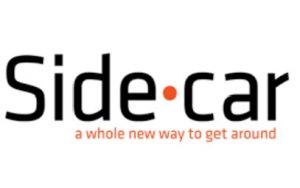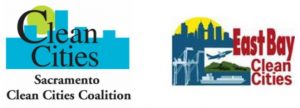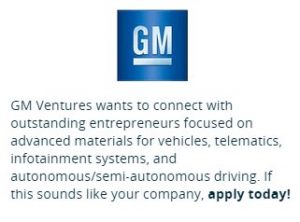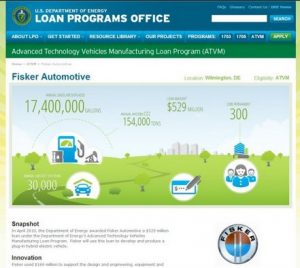by Jon LeSage, editor and publisher, Green Auto Market
Here’s my take on the 10 most significant and interesting occurrences during the past week…….
 General Motors Co. confirmed its commitment to urban mobility yesterday by announcing it has acquired the technology and most of the assets of Sidecar Technologies Inc. Sidecar had been the third largest ridesharing firm after Uber and Lyft, and the acquisition follows closely behind GM’s $500 million investment in Lyft. GM is also bringing over about 20 employees from the Sidecar team, including co-founder and Chief Technology Officer Jahan Khanna. It’s expected the deal price was somewhere around $39 million. Sidecar started up in San Francisco in 2012, which was the also the home base of Uber and Lyft; the company has been credited with playing an integral role in popularizing peer-to-peer rides where car owners transport customers through smartphone transactions; ridesharing also became common with Sidecar riders long before Uber got into that segment. Sidecar ceased operations at the end of December and said it would soon announce “the next big thing.” GM expects the Lyft and Sidecar acquisitions will place the automaker in a strong competitive position for ridesharing services and autonomous vehicles – and to compete with Uber and other automakers. Automakers are showing their seriousness about investing in urban mobility and advanced vehicle technologies through the GM deals; Ford CEO Mark Fields has said his company is working on its own ride-sharing service; and last year, Daimler acquired German ridesharing apps RideScout and mytaxi.
General Motors Co. confirmed its commitment to urban mobility yesterday by announcing it has acquired the technology and most of the assets of Sidecar Technologies Inc. Sidecar had been the third largest ridesharing firm after Uber and Lyft, and the acquisition follows closely behind GM’s $500 million investment in Lyft. GM is also bringing over about 20 employees from the Sidecar team, including co-founder and Chief Technology Officer Jahan Khanna. It’s expected the deal price was somewhere around $39 million. Sidecar started up in San Francisco in 2012, which was the also the home base of Uber and Lyft; the company has been credited with playing an integral role in popularizing peer-to-peer rides where car owners transport customers through smartphone transactions; ridesharing also became common with Sidecar riders long before Uber got into that segment. Sidecar ceased operations at the end of December and said it would soon announce “the next big thing.” GM expects the Lyft and Sidecar acquisitions will place the automaker in a strong competitive position for ridesharing services and autonomous vehicles – and to compete with Uber and other automakers. Automakers are showing their seriousness about investing in urban mobility and advanced vehicle technologies through the GM deals; Ford CEO Mark Fields has said his company is working on its own ride-sharing service; and last year, Daimler acquired German ridesharing apps RideScout and mytaxi.- Southern California Edison will be installing 1,500 electric car charging stations throughout Southern California. California Public Utilities Commission gave approval in December for a $22 million pilot program targeted at installing charging stations at locations where cars are parked for extended periods of time, such as at workplaces, campuses, recreational areas and apartment and condominium complexes. SCE will install and maintain the supporting electrical infrastructure, but participating property owners will own, operate and maintain the charging stations. CPUC issued a statement in December with modification to the San Diego Gas & Electric’s original proposal, and the utility must still decide whether or not to accept the CPUC’s modifications.
- Incentives for fleet deployment of EVs: ACT Expo is hosting a complimentary, one-hour webinar, which will highlight key incentives that help to substantially buy down the cost of electric vehicles, charging, and other costs of traditional vehicle ownership to maximize fleet deployment. Presenters include Nissan with information offered about significant fleet incentives; and GNA’s Funding 360° Program that helps companies, municipalities, and organization track, evaluate, and apply for funding programs throughout North America. Click here to register for the free webinar, “Making Cents of Electric Vehicles: Key Incentives for Fleet Deployment,” which takes place of Feb. 10, 2016, at 10:00-11:00 a.m. PT.
- Tesla’s Gigafactory: Panasonic has shed more light on the Gigafactory project in Nevada; the electronics giant will invest up to $1.6 billion in the $5 billion project, Panasonic president Kazuhiro Tsuga recently said at the Consumer Electronics Show (CES) in Las Vegas. Panasonic will also provide its expertise on battery development as its partner Tesla Motors develops the production plant for its more affordable battery packs in the upcoming Model 3 electric car.
- Propane-powered school buses: Roush CleanTech is working with Blue Bird to provide 11 propane-powered school buses to the Metropolitan School District of Warren Township. That will be the largest deployment of propane autogas school buses in the state of Indiana. The Blue Bird Propane Vision buses, purchased through dealer MacAllister Transportation, include ten 78-passenger models, and one bus outfitted with a wheelchair lift. “Better cold weather starts, lower maintenance and fuel cost, quieter buses, as well as better air quality for students, the bus driver and our community were the reasons we chose propane autogas,” said Steve Smith, director of transportation for M.S.D. Warren Township.
- Green cars sold and made in China: Battery electric and hybrid vehicles are expected double to 700,000 vehicles sold in China, the China Association of Automobile Manufacturers said. Sales of “new energy vehicles” quadrupled in 2015, thanks to government subsidies and other preferential policies. General Motors plans to export the plug-in hybrid version of its Cadillac CT6 luxury sedan from China to the U.S. when the car goes on sale this year. The plug-in hybrid version will be built only in a plant in China, which is one of two factories assembling the CT6, the company said.
- Tesla and Apple: Tesla CEO Elon Musk did confirm that his company will be working on an electric car project with Apple. Known as “Project Titan,” the program is reported to involve hundreds of engineers, and some analysts say its goal is to produce a car as innovative as the iPod or iPhone. “It’s pretty hard to hide something if you hire over a thousand engineers to do it,” Musk said in a recent interview with the BBC at Tesla’s California design studio. Tesla and Apple have also been filing for patents on similar technologies, another sign that an alliance was in the works, according to a Thomson Reuters report.
- VW investors suing: Along with over 450 lawsuits filed by owners of faulty Volkswagen diesel models, the German automaker just took another hit – dozens of the largest shareholders, and “thousands” of smaller investors, will be suing the company. They’ll be demanding compensation for the losses they’ve taken coming from the scandal. In other VW news, the California Air Resources Board on Tuesday of last week formally rejected VW’s plan to fix its polluting diesel engines. CARB said the recall plan was “incomplete, substantially deficient and falls far short of meeting the legal requirements” to be approved; and that VW was taking too long to devise a fix.
- RNG delivery trucks: UPS will be adding more renewable natural gas to its fleet with an estimated 15 million diesel gallon gas equivalents of RNG. It will be part of a multiple-year agreement with Memphis Light, Gas and Water and Atmos Energy Marketing, LLC, in the Memphis, Tenn. and Jackson, Miss., coverage areas for UPS deliveries. The RNG will fuel more than 140 heavy duty trucks in Memphis and Jackson, which is part of UPS’s natural gas fleet.
- General Motors and Honda may expand their hydrogen fuel cell vehicle joint venture, adding a new fuel cell plant. The new measure would take things toward a critical next step, helping put their research into production, the companies said. Honda is set to become the third major automaker to begin retailing a hydrogen-powered vehicle with the planned introduction, later this year, of its Clarity FCX.



 way i3 works
way i3 works
